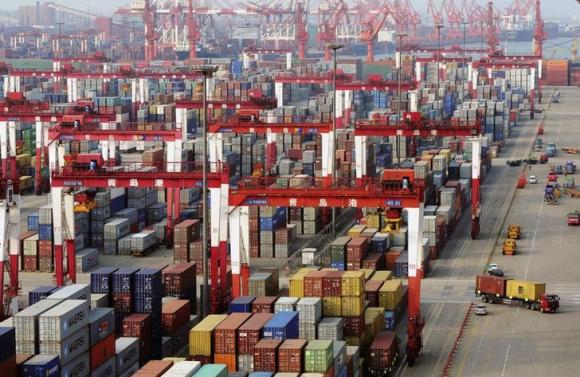|
 |
|
Trucks drive past piles of shipping containers at the Qingdao Port, Shandong province June 8, 2014. [Photo/Agencies] |
China's foreign trade growth fell far short of its target last year, but figures for December beat expectations and a new round of government policies are expected to help lift the world's second-largest economy's trade performance this year.
This improvement is anticipated because the government has taken another round of decisive measures to upgrade the industrial structure and increase trade with more emerging markets through new routes, a customs official said on Tuesday.
China's foreign trade rose by 3.4 percent year-on-year in 2014, said Zheng Yuesheng, spokesman for the General Administration of Customs.
The country's combined annual exports and imports grew by 4.9 percent in 2014 to 14.39 trillion yuan ($2.32 trillion), while imports fell by 0.6 percent to 12.04 trillion yuan.
The foreign trade surplus widened to 2.35 trillion yuan last year, an increase of 45.9 percent from a year earlier, according to the customs administration.
"A slowing recovery of the global economy, weak domestic investment and demand, and falling commodity prices are the major reasons behind the weak foreign trade growth in 2014," Zheng said at a news conference held by the State Council Information Office.
Zheng said other factors, including geopolitics, the fluctuation of global financial markets, and declining demand in Europe and Japan, all contributed to a reduction in the volume of Chinese exports last year.
Meanwhile, trade with the European Union, China's biggest trade partner, rose by 8.9 percent year-on-year to 3.78 trillion yuan in 2014.
Trade with the United States, China's second-biggest trade partner, rose by 5.4 percent year-on-year to 3.41 trillion yuan last year, while trade with Hong Kong declined by 7.2 percent, to 2.31 trillion yuan.
Zheng said, "The central government, eager to put trade growth on a firm footing, has put forward a number of measures.
"These include accelerating the pace of a nationwide industrial upgrading and providing more financial assistance to small and medium-sized enterprises, as well as developing the Silk Road Economic Belt and 21st Century."
Zhao Zhongxiu, a trade professor at the University of International Business and Economics in Beijing, said, "Even though the export share of China's traditional labor-intensive sectors dropped for certain periods last year, this doesn't mean that these businesses have lost their advantage in the global market.
"As China is cutting a large amount of highly polluted and low-end manufacturing for sustainable growth, it is reasonable to see the trade growth rate drop for the time being."
Despite relatively slower growth in exports nationwide, more Chinese manufacturers, especially those focusing on development of self-innovated products, are aiming high overseas.
GAC Motor Co, a division of Guangzhou Automobile Group Co, is aiming to ship more domestically developed vehicles overseas in coming years.
Wu Song, general manager of the company, said it will expand exports in this booming market and begin shipping to North America in 2015.
"We are focusing on the overseas market as a diversified strategy to maintain growth, since the domestic market has already become a hot spot for industrial competition from international carmakers," Wu said.
The company's exports will account for up to 20 percent of its sales by 2020, Wu added.
